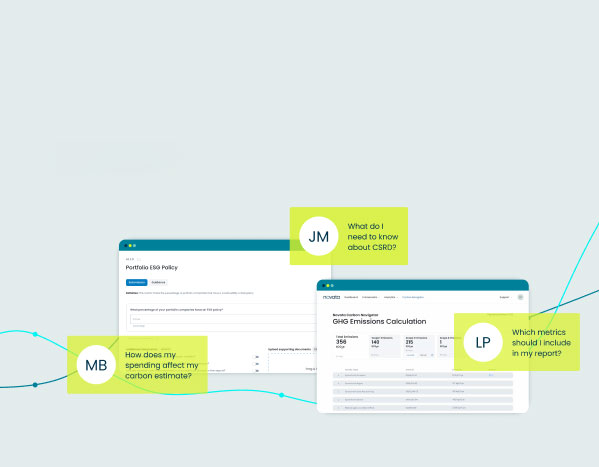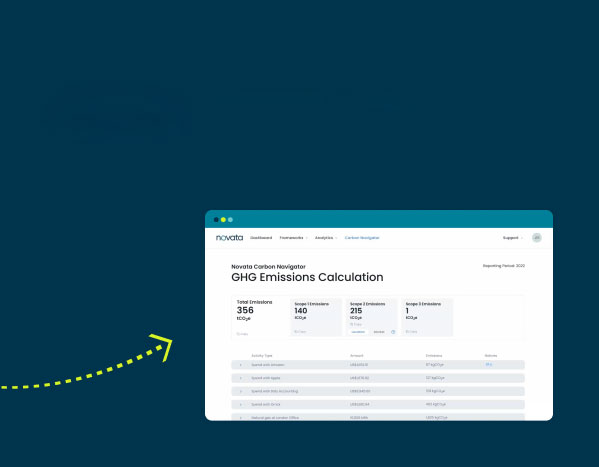The Corporate Sustainability Reporting Directive (CSRD) is the first piece of legislation from the European Union (EU) that builds on existing sustainability standards and frameworks. It aims to help key stakeholders better evaluate the sustainability performance of companies and elevate the importance of sustainability reporting in investment decision-making.
Companies subject to the CSRD must report according to the European Sustainability Reporting Standards (ESRS). There are a total of 12 standards covering everything from climate change to workforce (a full list is below).
What Are ESRS Data Points?
To support companies in complying with the CSRD, the European Financial Reporting Advisory Group (EFRAG) delineated the ESRS into approximately 1,191 individual data points. These data points provide stakeholders with transparent insights into a company’s sustainability efforts, fostering accountability and driving continuous improvement. By standardizing reporting practices, ESRS data points enable comparability across industries and facilitate informed decision-making.
Novata’s Metrics and Regulations team reviewed these data points and turned them into 1,260 qualitative and quantitative metrics on our platform. These metrics draw from the EFRAG data points and have guidance attached to further support companies when reporting. However, it’s important to note that companies do not need to answer every single data point. Aside from reporting on the cross-cutting mandatory standards, the specific data points companies are subject to will depend on the results of their double materiality assessment.
The 12 ESRS Standards
The two cross-cutting standards, ESRS 1 and ESRS 2, are mandatory requirements companies must report on, regardless of the results of their double materiality assessment.
- ESRS 1: General Requirements
- ESRS 2: General Disclosures
The 10 non-mandatory topical standards, broken down into subtopics, are tailored topic-specific disclosures that companies will report on based on their unique sustainability practices and impacts.
- ESRS E1: Climate Change
- ESRS E2: Pollution
- ESRS E3: Water and Marine Resources
- ESRS E4: Biodiversity and Ecosystems
- ESRS E5: Resource Use and Circular Economy
- ESRS S1: Own Workforce
- ESRS S2: Workers in the Value Chain
- ESRS S3: Affected Communities
- ESRS S4: Consumers and End-Users
- ESRS G1: Business Conduct
Types of ESRS Data Points
There are four types of ESRS data points on Novata’s platform:
| TYPE | DESCRIPTION | EXAMPLE |
|---|---|---|
| Mandatory | Every company must report on this ESRS topic, regardless of materiality. Most mandatory data points are in ESRS 2, but there are some mandatory data points in other topical standards (based on an organization’s double materiality assessment). Within ESRS 2, there are multiple data points, some of which are omittable, and some are non-omittable. | ESRS 1 outlines the requirements and parameters of reporting to CSRD. ESRS 2 outlines the disclosure requirements that are universally applicable to all companies reporting to CSRD, regardless of industry, sector, or size. |
| Material | Companies must disclose the data points that fall under each material ESRS topic. Material ESRS topics are identified during the double materiality assessment. Each material ESRS topic includes data points, some of which are omittable, and some are non-omittable. | For example, a meat producer completes its double materiality assessment and finds that ESRS E1: Climate Change is a material ESRS topic it must report on. |
| Omittable vs. Non-Omittable | Specific individual data points that do/do not have to be disclosed for each ESRS topic. This is true for each Material ESRS topic as well as ESRS 2, the only universally Mandatory topic. That means that even the Mandatory topic has data points within that are omittable. | For example, the same meat production company could choose to omit non-material information that is not core to its business, such as data points around IT energy usage or marine biodiversity. |
| Minimum Disclosure Requirement (MDR) | This is not a data point, per se. It is a Disclosure Requirement that is attached to one or more metrics. When you hear someone say “MDR metric,” they are referring to a metric that has a Minimum Disclosure Requirement. The MDR is the minimum acceptable content — and the format required for that content — to sufficiently disclose the metric. MDRs tend to apply to data points that relate to the implementation of policies, actions, and targets and require the company to qualify responses with descriptive details. | An example of a MDR would be in ESRS E1, where a company reports on a number of policy characteristics including:
|
How Novata Can Help
Gain the knowledge and tools needed to successfully understand the European Sustainability Reporting Standards (ESRS) from a pragmatic perspective. Novata’s team of ESG experts reviews material topics and the scope of work required for your business, identifies stakeholders that will need to be involved in your double materiality assessment, and provides guidance and training to support buy-in. Get started today.






